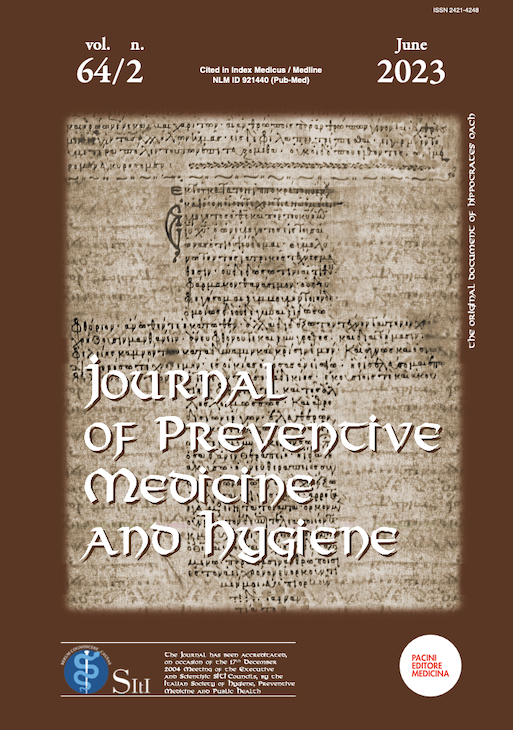Abstract
Background: After nearly four years of living in a pandemic due to the Corona virus, and almost three years after developing multiple vaccines, vaccination rates remain suboptimal, thereby preventing our society from reaching herd immunity.
Purpose: Extant literature on vaccine hesitancy led us to hypothesize that specific socio/political variables may be contributing to low vaccination rates, particularly in South Carolina.
Method: By use of Qualtrics surveys, we collected data from people across all counties in South Carolina regarding vaccine status, plans to vaccinate, and a host of demographics.
Results: Findings revealed that those less likely to be vaccinated against COVID-19 tended to be younger, female, republican. Interestingly, COVID-19 knowledge did not appear to differ between vaccination status groups, although COVID-19 vaccine and general vaccine knowledge did differ.
Conclusions: While understanding of COVID-19 was relatively similar across groups, targeted and tailored interventions aimed at enhancing the public’s general and COVID-19-specific vaccine knowledge may aid efforts to reach herd immunity.
Keywords: COVID-19, vaccine hesitancy, vaccine knowledge
References
“CDC Covid Data Tracker.” Centers for Disease Control and Prevention, Centers for Disease Control and Prevention, 11 Apr. 2022, https://covid.cdc.gov/covid-data-tracker/#datatracker-home.
“SCDHEC.” COVID-19 Vaccination Dashboard, https://scdhec.gov/covid19/covid-19-data/covid-19-vaccination-dashboard.
Fred, H. L, & Scheid, M. S. “Physician Burnout: Causes, Consequences, and (?) Cures.” Texas Heart Institute Journal, Texas Heart® Institute, Houston, 2018, https://www.ncbi.nlm.nih.gov/pmc/articles/PMC6183652/.
Travis, J., et al. “Identifying the Determinants of Covid-19 Preventative Behaviors and Vaccine Intentions among South Carolina Residents.” PLOS ONE, vol. 16, no. 8, 2021, https://doi.org/10.1371/journal.pone.0256178.
Kreps, S.E., & Kriner, D.L., “Factors Influencing Covid-19 Vaccine Acceptance across Subgroups in the United States: Evidence from a Conjoint Experiment.” Vaccine, vol. 39, no. 24, 2 June 2021, pp. 3250–3258., https://doi.org/10.1016/j.vaccine.2021.04.044.
Qiao, S., et al. “Vaccine Acceptance among College Students in South Carolina: Do Information Sources and Trust in Information Make a Difference?” Europe PMC, 2020, https://doi.org/10.1101/2020.12.02.20242982.
Carpenter, D.M., et al. “Rural Community Pharmacists’ Ability and Interest in Administering COVID-19 Vaccines in the Southern United States.” Journal of the American Pharmacists Association, 17 Jan. 2022, https://doi.org/10.1016/j.japh.2022.01.013.
Wu, J., et al. (2022). The association between lifestyle and COVID-19 vaccine hesitancy in China: A large-scale cross-sectional survey. Journal of Affective Disorders, 3, 92-99.
Mangla, S., et al., (2021). COVID-19 vaccine hesitancy and emerging variants: evidence from six countries. Behavioral Sciences, 11(11), 1-18.
Al-Qerem, W., Jarab, A. S., Qarqaz, R., & Hayek, M. A. (2022). Attitudes of a sample of Jordanian young adults toward different available COVID-19 vaccines. Vacunas, 23, S56-S63.
Leigh, J. P., et al. (2022). Factors affecting COVID-19 vaccine hesitancy among healthcare providers in 23 countries. Vaccine, 40(31), 4081-4089. https://doi.org/10.1016/j.vaccine.2022.04.097.
Mohamed, N. A., Solehan, H. M., Mohd Rani, M. D., Ithnin, M., & Che Isahak, C. I. (2021). Knowledge, acceptance and perception on COVID-19 vaccine among Malaysians: A web-based survey. Plos one, 16(8), e0256110.
Liao, H., & Hitchcock, J. “Reported Credibility Techniques in Higher Education Evaluation Studies That Use Qualitative Methods: A Research Synthesis.” Evaluation and Program Planning, vol. 68, June 2018, pp. 157–165., https://doi.org/10.1016/j.evalprogplan.2018.03.005.
Kini, A., et al. “Differences and Disparities in Seasonal Influenza Vaccine, Acceptance, Adverse Reactions, and Coverage by Age, Sex, Gender, and Race.” Vaccine, vol. 40, no. 11, 8 Mar. 2022, pp. 1643–1654., https://doi.org/10.1016/j.vaccine.2021.04.013.
Katz, R.V., et al. “The Legacy of the Tuskegee Syphilis Study: Its Impact on Willingness to Participate in Biomedical Studies.” Annals of Epidemiology, vol. 17, no. 9, 2007, p. 744., https://doi.org/10.1016/j.annepidem.2007.07.066.
Zintel, S., et al. “Gender Differences in the Intention to Get Vaccinated against COVID-19: A Systematic Review and Meta-Analysis.” Journal of Public Health, 2022, https://doi.org/10.1007/s10389-021-01677-w.
Conis, E. “A Mother's Responsibility: Women, Medicine, and the Rise of Contemporary Vaccine Skepticism in the United States.” Bulletin of the History of Medicine, U.S. National Library of Medicine, 2013, https://pubmed.ncbi.nlm.nih.gov/24096560/.
Motta, M. “Republicans, Not Democrats, Are More Likely to Endorse Anti-Vaccine Misinformation.” American Politics Research, vol. 49, no. 5, 2021, pp. 428–438., https://doi.org/10.1177/1532673x211022639.
Joslyn, M.R., & Sylvester, S.M. “The Determinants and Consequences of Accurate Beliefs about Childhood Vaccinations.” American Politics Research, vol. 47, no. 3, 2017, pp. 628–649., https://doi.org/10.1177/1532673x17745342.
Loomba, S., et. al. “Measuring the impact of COVID-19 vaccine misinformation on vaccination intent in the UK and the USA” Nature Human Behaviour vol. 5, no. 6, 2021, https://doi.org/10.1038/s41562-021-01056-1.
Petty, R.E., & Cacioppo, J.T. (1986). The elaboration likelihood model of persuasion. In L. Berkowitz (Ed.), Advances in experimental social psychology (Vol. 19, pp. 123-203). New York: Academic Press.
Ahmad Rizal, A.R., Nordin, S.M., Ahmad, W.F.W., Ahmad Khiri, M.J., & Hussin, S.H. (2022). How Does Social Media Influence People to Get Vaccinated? The Elaboration Likelihood Model of a Person’s Attitude and Intention to Get COVID-19 Vaccines. International Journal of Environmental Research and Public Health, 19(4), 2378.

